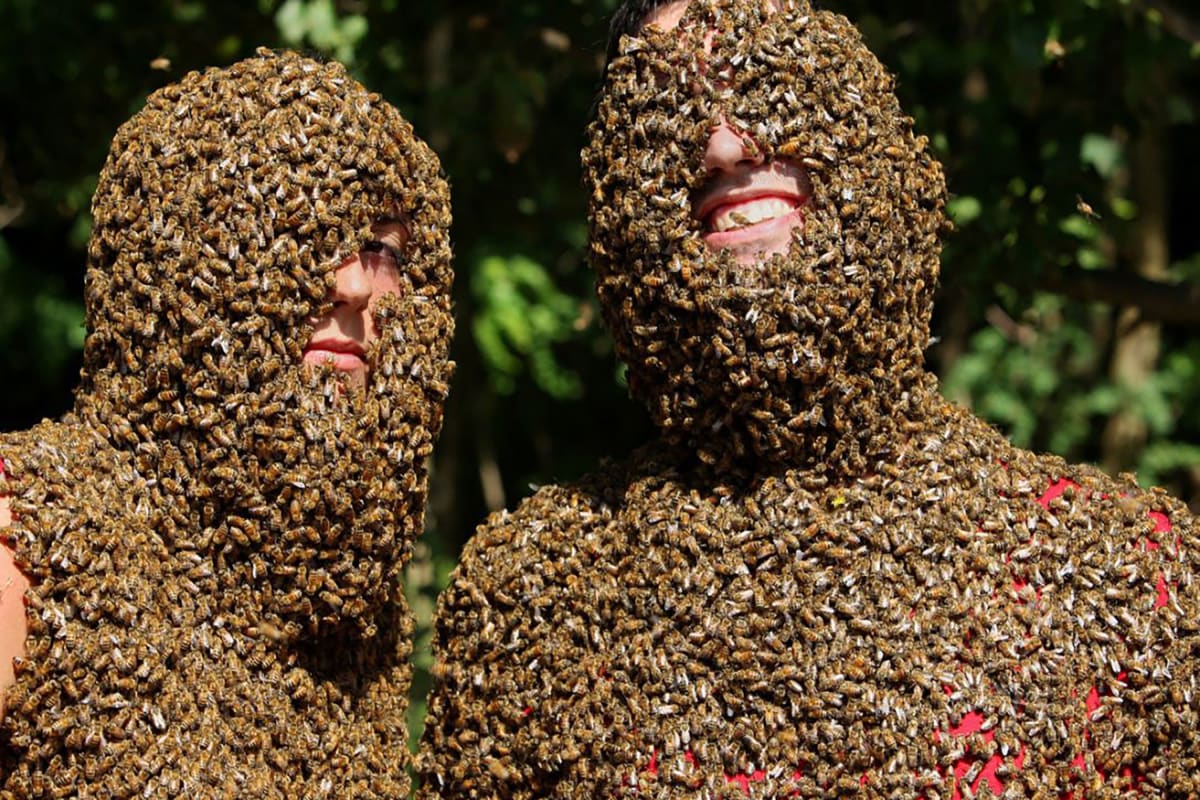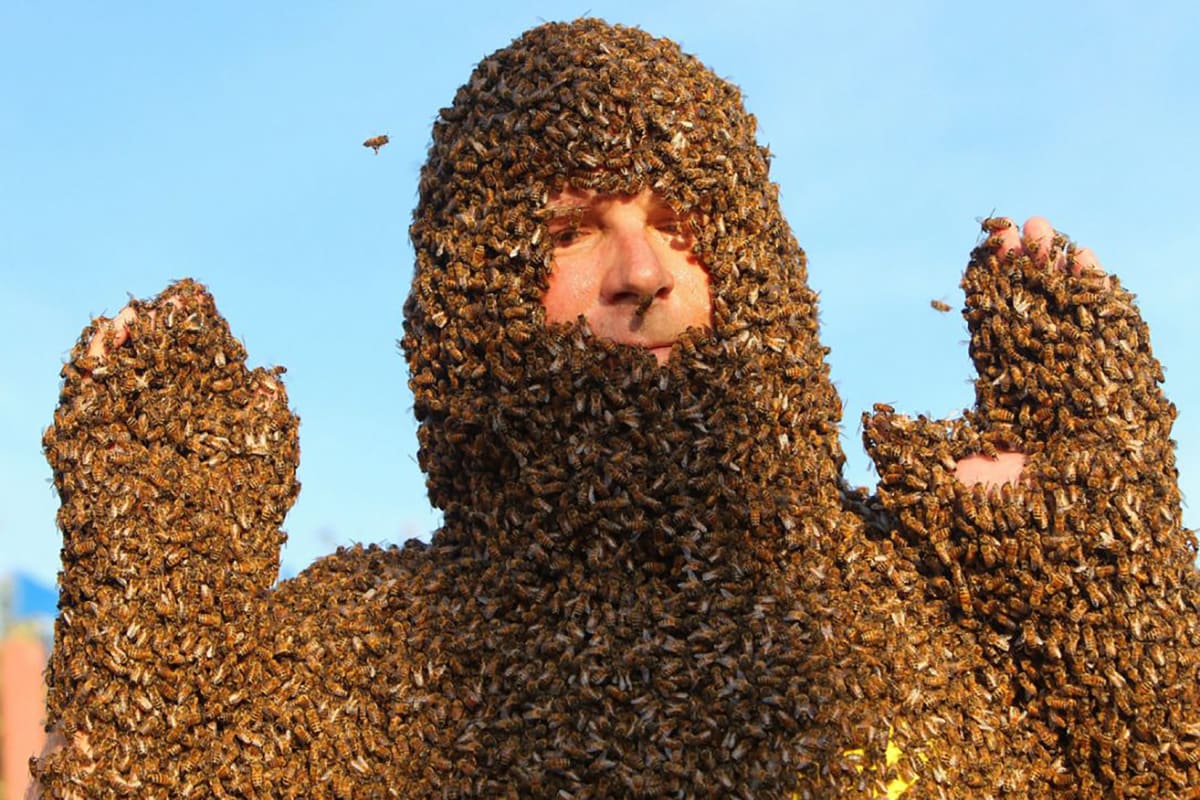The clue is in the name
But it basically involves people, beekeepers to be more precise, encouraging the stinging insects to cover their faces while they strut their stuff on a catwalk.

An age old tradition?
Did the people of Clovermead fight hard to keep this alive over the centuries? Despite the obvious risks it poses to their very own faces? Well, not quite.
All traditions must start somewhere, but this month sees the return of the 14th Annual Bee Beard Competition, which basic maths suggests was first started in the 21st century.
It is all in the name of celebrating bees and the honey they produce on a farm named Clovermead in the town of Aylmer in Ontario, Canada (be honest, you thought it would be in the deep south of the USA, didn’t you?). Despite its rustic appearance and name, Clovermead was founded in 1975. Originally a few beehives behind a family garage, the operation was moved to a restored log cabin and has since grown to include a bee-themed Adventure Farm, Discovery Centre and Gift Shop. And of course the annual bee events.

The highlights...
Crowds flocking to see teams of beekeepers parading their beards of crawling honeybees in front of the judges, while more family entertainment and brave bee-related demonstrations take place around the farm. The bees rarely confine themselves to forming a neat goatee, often sprawling to cover the entire chin, cheeks, neck and shoulders and even seemingly devouring some brave souls’ entire faces.
Competitors always live to tell the tale, however, with organizers reassuring us that “bees eat pollen and collect nectar, they do not eat people.”
But how do they do it? It’s essentially one extravagant game of follow the leader. The beekeeper plucks out the queen bee, ties her to his or her face in a small cage and then the worker bees just huddle around her, clinging doggedly onto the beekeeper’s skin.
Those who want to make it a bit more shapely apply clever diversions such as Vaseline to stop the bees crawling into unwanted areas, with the winner the one who manages to hold the most bees in their beard. Luckily this isn’t judged through a painstaking counting process, but by weighing the contestants before and after they don their insect face wig.
Clovermead's 14th Annual Bee Beard Competition is hosted during the Honey Festival in the month of August in Aylmer, Ontario, Canada. Un-bee-lievable (couldn’t resist).
Top Stag Do Locations
Those who want to make it a bit more shapely apply clever diversions such as Vaseline to stop the bees crawling into unwanted areas, with the winner the one who manages to hold the most bees in their beard. Luckily this isn’t judged through a painstaking counting process, but by weighing the contestants before and after they don their insect face wig.
Clovermead's 14th Annual Bee Beard Competition is hosted during the Honey Festival in the month of August in Aylmer, Ontario, Canada. Un-bee-lievable (couldn’t resist).










